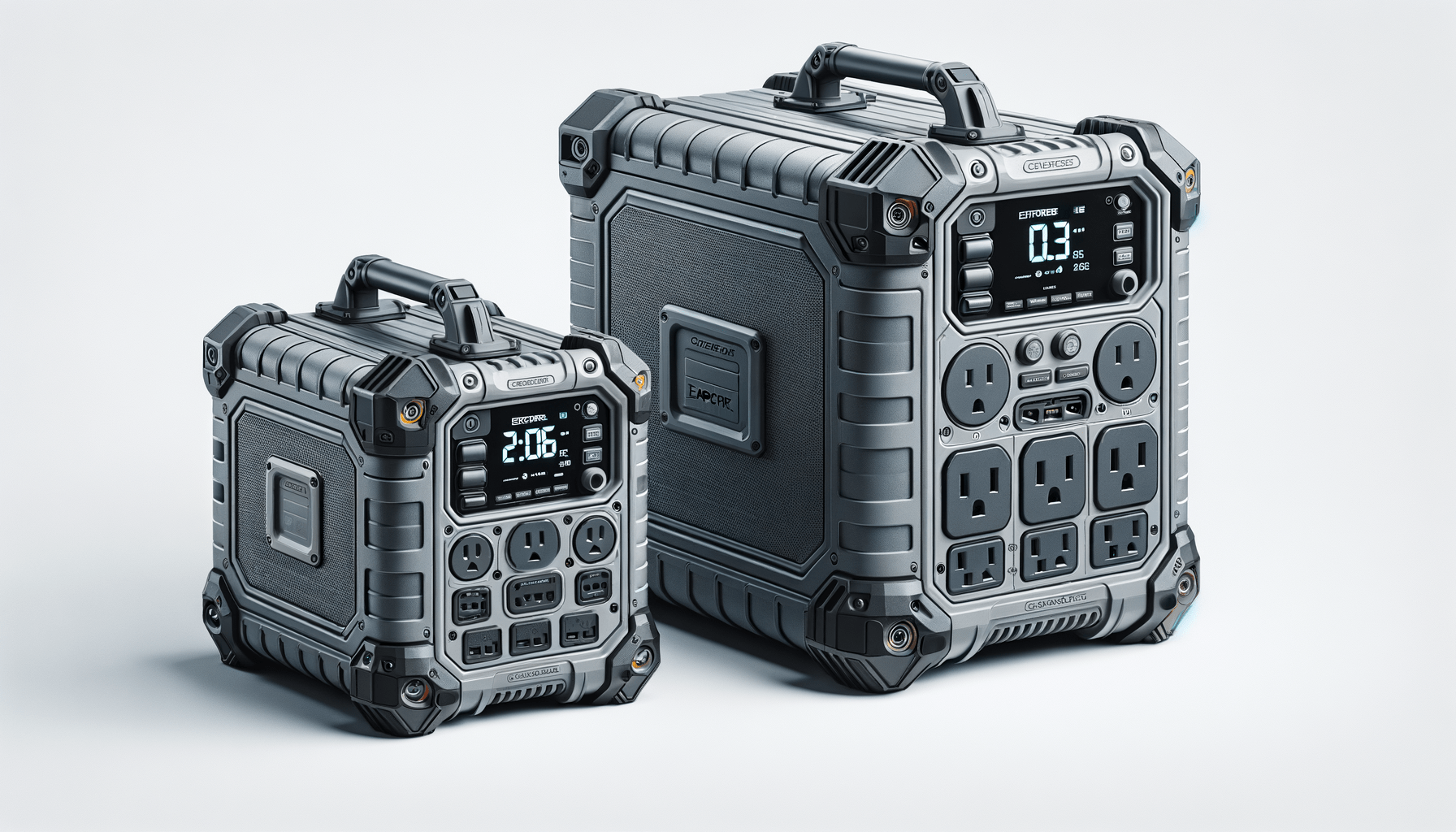In a world increasingly focused on mobility and sustainability, portable power stations have become a go-to solution for both outdoor enthusiasts and emergency preparedness planners alike. Two of the market’s contenders, the Jackery Explorer 1000 Plus and the EcoFlow Delta Mini, promise to keep your gadgets running whether you’re off the grid or weathering a power outage. In this comprehensive look, we’ll dive deep into their specifications, features, and how they stack up against one another.
Key Features Compared
Let’s kick things off by highlighting some of the key features of the Jackery 1000 Plus and EcoFlow Delta Mini to see how they line up.
| Feature | Jackery Explorer 1000 Plus | EcoFlow Delta Mini |
|---|---|---|
| Battery Capacity | 1264Wh | 882Wh |
| Max AC Output | 2000W | 1400W |
| Cycle Life | 4000 cycles to 80% capacity | 800 cycles to 80% capacity |
| Expandability | Up to 5kWh with extra battery packs | Not expandable |
| Charging Options | Solar, Wall, Car | Solar, Wall, Car |
| Fast Charging | 2 hours with 800W Solar | 1.6 hours with X-Stream wall charge |
| App Connectivity | WiFi/Bluetooth | Yes, with detailed monitoring |
| Weight | 32lbs (14.5kg) | 23.6 lb (10.7 kg) |
Looking at the table above, the Jackery 1000 Plus boasts a greater battery capacity and an AC output that means it can power more high-demand devices simultaneously. However, the EcoFlow Delta Mini, though smaller in storage capacity, offers fast charging technology and a more travel-friendly weight.
Design and Portability
Both power stations are designed with portability in mind. The Jackery 1000 Plus maintains a longer-lasting battery with the option to connect additional packs for an extended experience. Meanwhile, the Delta Mini might be more appealing to those who prioritize space-saving and lightweight design.

Charging and Power Management
Charging versatility is crucial for a portable power station. Both units present a triad of charging avenues: via solar panels, a car outlet, or plugged into a wall. They’re engineered to offer fast, efficient charging experiences, though the approach differs between models.
Battery and Cycle Life
Battery longevity is an important consideration. Jackery’s LiFePO4 battery promises exceptional endurance with up to 4000 charge cycles, meaning a longer lifespan. On the other hand, the Delta Mini with its 800 cycles to 80% still offers a solid lifecycle for NCM Li-ion batteries.
Environmental Considerations and Safety
Both brands approach sustainability earnestly, with recyclable materials and emission-free technology. Safety is also front and center in their designs, employing advanced BMS to protect against various electrical risks.

Smart Features and App Integration
Modern portable power stations are smart, and that’s true for both the Jackery and EcoFlow units. With app connectivity and real-time data management, users have detailed control over their power usage and charging.
Conclusion: Which One is For You?
The decision between Jackery Explorer 1000 Plus and EcoFlow Delta Mini boils down to individual needs and priorities. If expandability, higher power output, and a lengthier battery life cycle are your top considerations, Jackery could be your pick. However, if you prefer a lighter station with swifter charging times and good capacity for its size, the Delta Mini might edge out as your favorite companion.


Leave a Reply